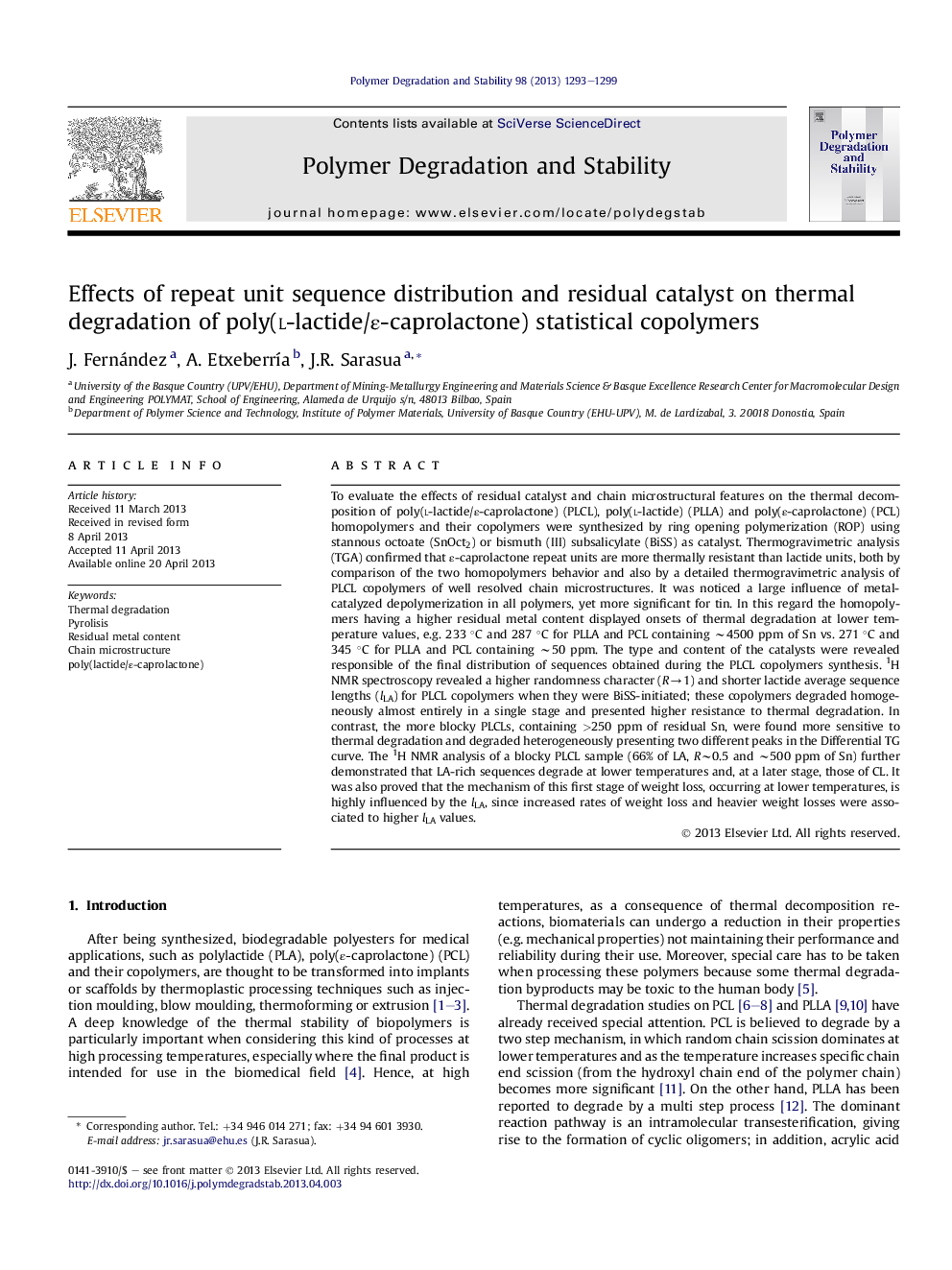| کد مقاله | کد نشریه | سال انتشار | مقاله انگلیسی | نسخه تمام متن |
|---|---|---|---|---|
| 5202202 | 1381891 | 2013 | 7 صفحه PDF | دانلود رایگان |

To evaluate the effects of residual catalyst and chain microstructural features on the thermal decomposition of poly(l-lactide/ε-caprolactone) (PLCL), poly(l-lactide) (PLLA) and poly(ε-caprolactone) (PCL) homopolymers and their copolymers were synthesized by ring opening polymerization (ROP) using stannous octoate (SnOct2) or bismuth (III) subsalicylate (BiSS) as catalyst. Thermogravimetric analysis (TGA) confirmed that ε-caprolactone repeat units are more thermally resistant than lactide units, both by comparison of the two homopolymers behavior and also by a detailed thermogravimetric analysis of PLCL copolymers of well resolved chain microstructures. It was noticed a large influence of metal-catalyzed depolymerization in all polymers, yet more significant for tin. In this regard the homopolymers having a higher residual metal content displayed onsets of thermal degradation at lower temperature values, e.g. 233 °C and 287 °C for PLLA and PCL containing â¼4500 ppm of Sn vs. 271 °C and 345 °C for PLLA and PCL containing â¼50 ppm. The type and content of the catalysts were revealed responsible of the final distribution of sequences obtained during the PLCL copolymers synthesis. 1H NMR spectroscopy revealed a higher randomness character (Râ1) and shorter lactide average sequence lengths (lLA) for PLCL copolymers when they were BiSS-initiated; these copolymers degraded homogeneously almost entirely in a single stage and presented higher resistance to thermal degradation. In contrast, the more blocky PLCLs, containing >250 ppm of residual Sn, were found more sensitive to thermal degradation and degraded heterogeneously presenting two different peaks in the Differential TG curve. The 1H NMR analysis of a blocky PLCL sample (66% of LA, Râ¼0.5 and â¼500 ppm of Sn) further demonstrated that LA-rich sequences degrade at lower temperatures and, at a later stage, those of CL. It was also proved that the mechanism of this first stage of weight loss, occurring at lower temperatures, is highly influenced by the lLA, since increased rates of weight loss and heavier weight losses were associated to higher lLA values.
Journal: Polymer Degradation and Stability - Volume 98, Issue 7, July 2013, Pages 1293-1299